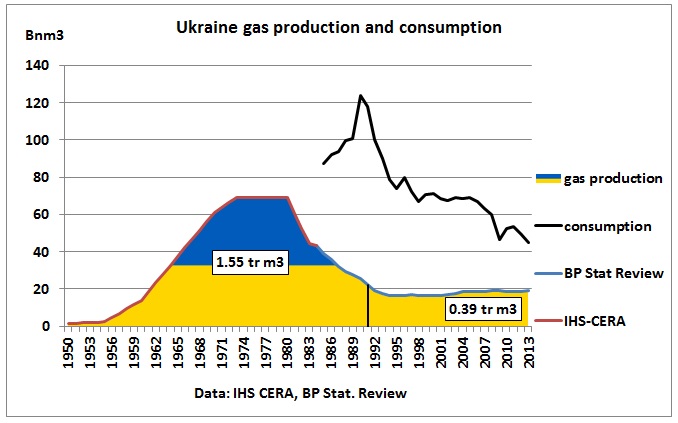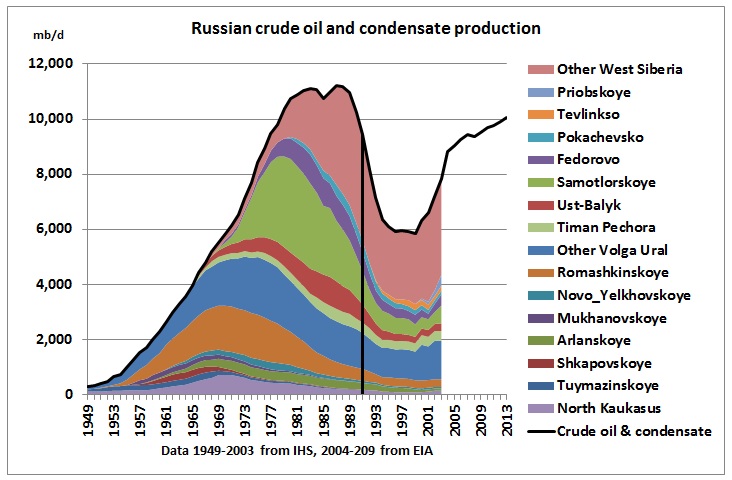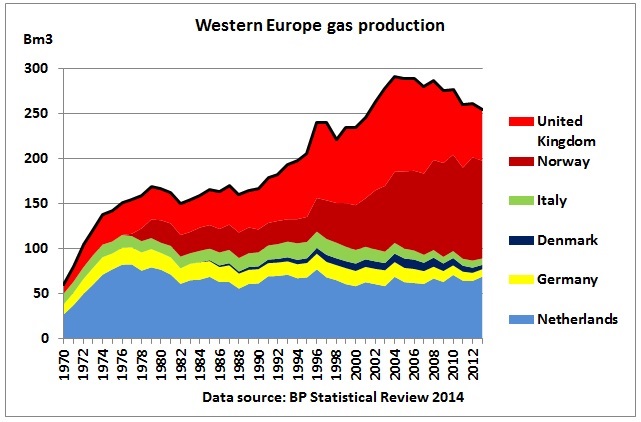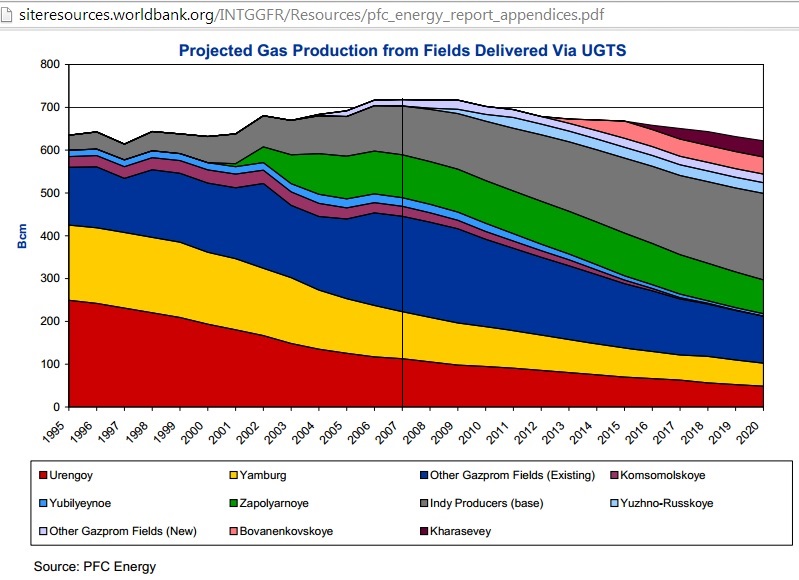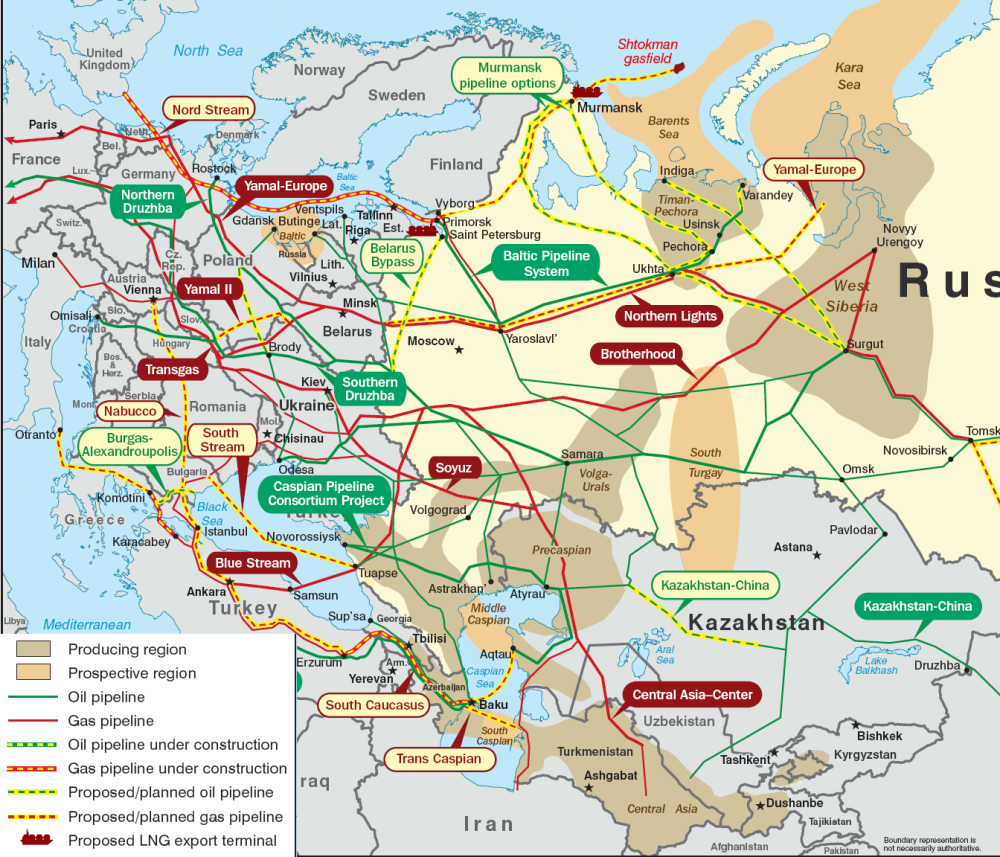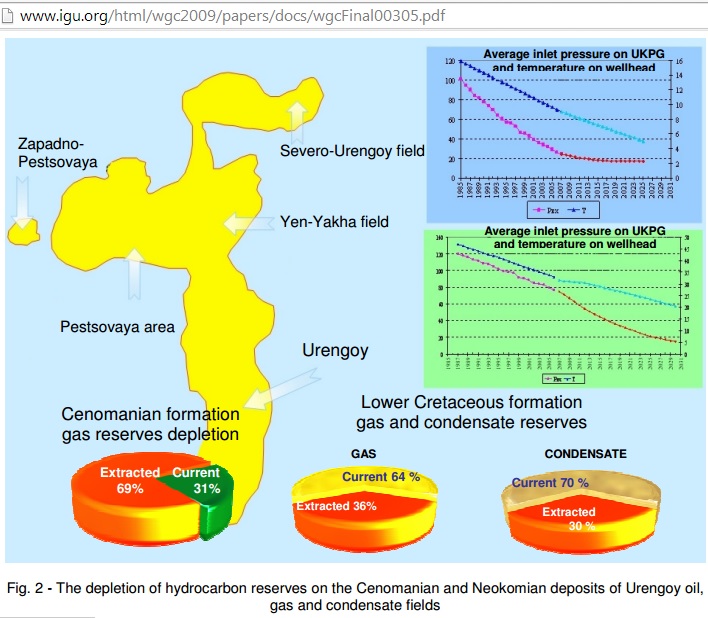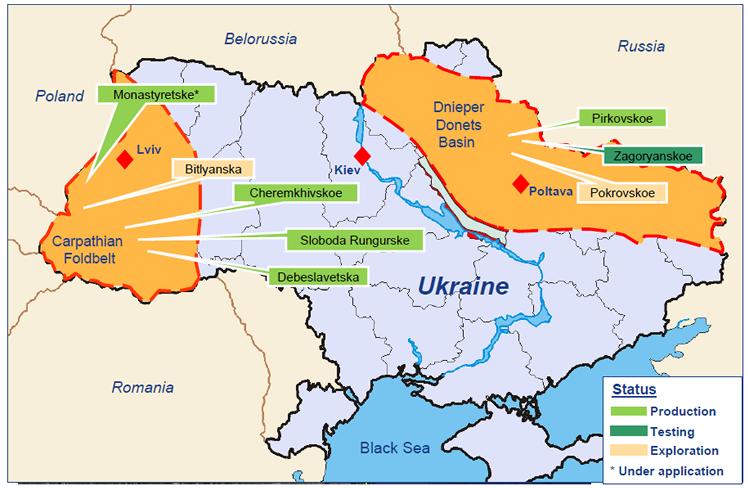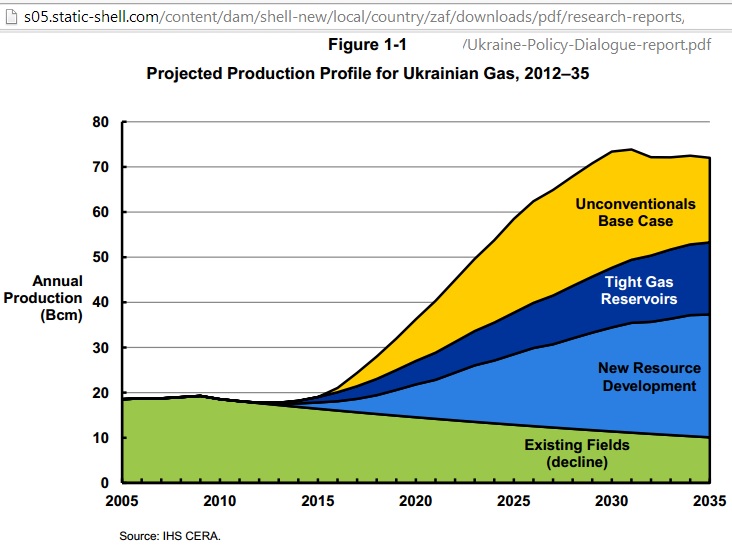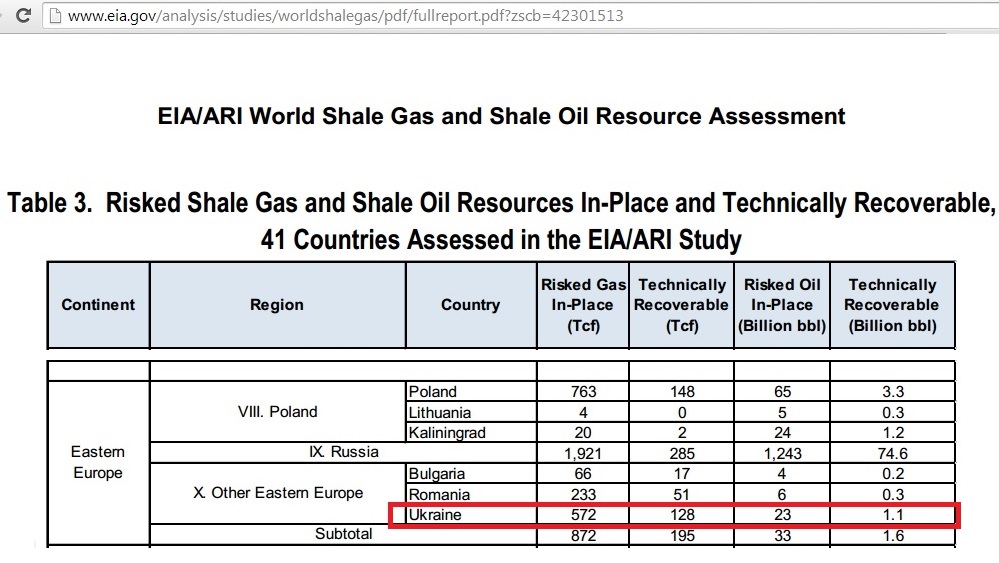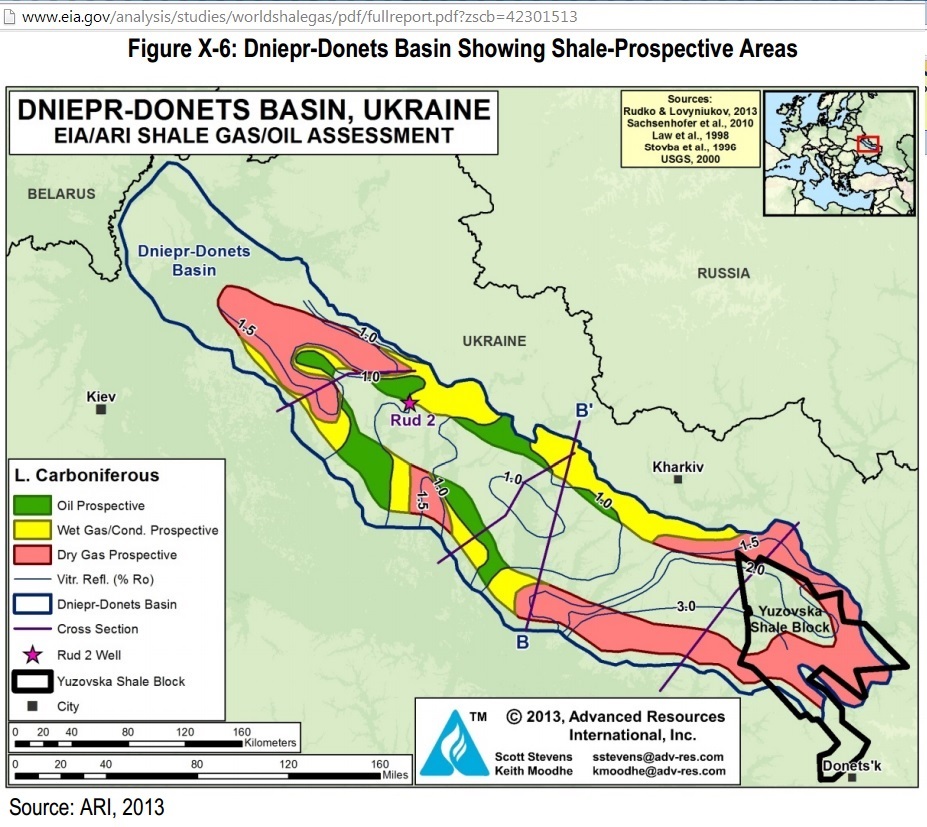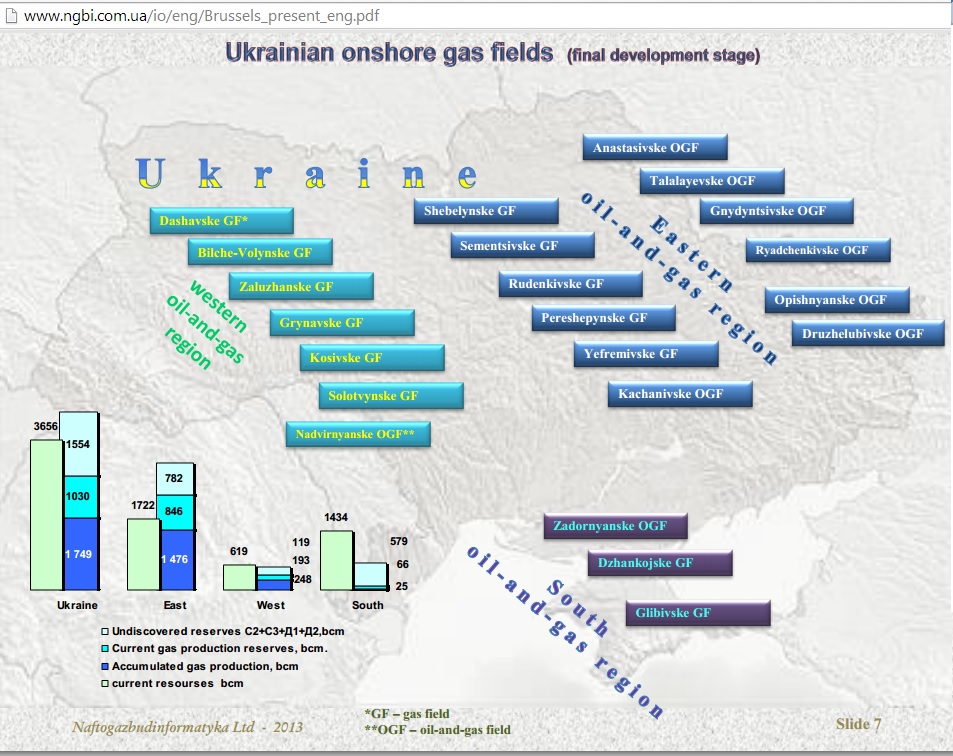For 8 years now there are problems with Russian gas flowing to and through Ukraine. Even Europe – where gas production peaked 10 years ago – has been affected. The fact is that the era of cheap Russian gas is over. That is why Russia can no longer afford to supply Ukraine with discounted gas. This has impacted on cash strapped Ukrainian governments and exacerbated ethnic fault lines.
Fig 1: Languages and ethnicity in Ukraine
http://commons.wikimedia.org/wiki/File:Ethnolingusitic_map_of_ukraine.png
In order to become less dependent on Russian gas exports the Kiev government had issued exploratory licenses in January 2013 to drill for shale gas, both in the West (Oleska) and the East (Yusivska). Irrespective of whether shale gas is economically viable or environmentally sustainable it is a tragic coincidence that MH17 traversed parts of exactly that Eastern shale gas area which had become a war zone where participants on the ground may not necessarily be aware of this energy context which is the focus of this article.
In this graph, a shale gas map from the EIA has been superimposed on a google map.
Fig 2: MH17 crashed not far from the shale gas battle field (black contour)
Let’s have a look at some gas statistics:
1970s
A report “Natural Gas and Ukraine’s Energy Future” from IHS-CERA describes that after WW2 a gas pipeline was built in 1949 to bring Ukrainian gas from the North Carpathian basin to Moscow and later to Minsk (Belarus) and other Baltic states. In the 1960s and 70s the Shebelinkskoye gas field in the Dniepr-Donets basin was the centre for Soviet industrial development. Ukraine’s gas boom was over in the late 1970s and the gas industry moved to West Siberia and Central Asia.
Fig 3: Ukraine’s gas peak in the 1970s and gas consumption peak in 1991
Ukraine’s gas consumption skyrocketed in the last years of the Soviet Union but dramatically dropped after its collapse. In 2013, gas production was 43% of consumption.
The IHS-CERA report is available here:
1991
As Ukraine’s gas production dropped, Russia’s giant oil fields in West Siberia peaked which – together with the Chernobyl nuclear accident (also in Ukraine north of Kiev) resulted in an energy crisis which contributed to the down fall of the Soviet Union.
Fig 4: Russian crude production peaked in the mid 1980s before the collapse
Read how then President Gorbachev complained that “people were running out of energy” in this post:
4/10/2010 Russia’s oil peak and the German reunification
http://crudeoilpeak.info/russia%E2%80%99s-oil-peak-and-the-german-reunification
2004
Fig 5: West European gas production
West European gas production peaked in 2004 at 291 bn m3, making Europe more dependent on gas imports from Russia.
2005
Russian gas production which supplies gas through the Ukrainian Gas Transport System (pipelines) starts to peak as shown in the following graph of a World Bank report prepared by PFC Energy:
Fig 6: Peaking of Russian gas fields
http://siteresources.worldbank.org/INTGGFR/Resources/pfc_energy_report_appendices.pdf
We see that legacy fields are declining and being replaced by new fields which are more expensive to develop, often with new infrastructure in remote areas.
As a result, gas prices have skyrocketed:
Fig 7: Russian gas prices superimposed on production profile
Russia has 3 price levels: government controlled prices for domestic consumption, prices for gas exports to former Soviet Union countries and highest prices for exports to Europe. Note that prices went up already before the peak.
Fig 8: Gas and oil pipelines in Russia and Eastern Europe
http://www.aworldincrisis.org/wp-content/uploads/2013/11/russia-pipelies.png
The Brotherhood pipeline carries gas from the West Siberian gas fields to Ukraine and on to Europe. The decline in the Urengoy gas field is described in a 2009 geological report
“INTEGRATED SOLUTIONS FOR EFFECTIVE DEVELOPMENT AND EXPLOITATION OF URENGOY OIL, GAS, CONDENSATE FIELD.”
by Grigory Lanchakov to the International Gas Union
reads: “Currently, for the Cenomanian and Valanginian horizons of Urengoy field, which are at a late stage of development, the time of «easy gas» is over.”
Fig 9: Depletion levels in West Siberian gas fields in 2009
The Cenomanian formation in the Urengoy field is depleted by 69%
http://www.kgu.or.kr/download.php?tb=bbs_017&fn=wgcFinal00305.pdf&rn=wgcFinal00305.pdf
2009
A EU report THE JANUARY 2009 GAS SUPPLY DISRUPTION TO THE EU: AN ASSESSMENT describes:
“On 18th December 2008, Gazprom announced that it would interrupt supplies to Ukraine as of 1st January 2009 unless agreement was reached over Ukraine’s outstanding payments and a new contract signed.
Gazprom stopped supplying gas for Ukrainian consumption on the 1 January 2009 while gas to be transited through Ukraine for European consumption continued to be delivered to Ukraine. Normal transit to the EU continued through 1st January.
On 2nd January, gas deliveries to several European Member States were affected, notably Poland, Slovakia, Hungary, and above all Bulgaria and Romania.
On the night of 6th to 7th January, all supplies from Russia through Ukraine to the EU were cut. There were no gas supplies from Russia to Europe from 7 January to 20 January.”
Fig 10: Russian gas cuts to EU in 2009
http://ec.europa.eu/energy/strategies/2009/doc/sec_2009_0977.pdf
This report is followed by many other reports of the European Commissioner for Energy
http://ec.europa.eu/commission_2010-2014/oettinger/headlines/news/archives_en.htm
2011
ENI acquires licenses to explore for shale gas.
This map shows where most of the Ukrainian gas is currently produced:
Fig11: Ukrainian gas producing regions with 90% coming from 120 fields in the Donets basin
http://www.2b1stconsulting.com/eni-increases-acreage-in-polish-and-ukrainian-shale-gas/
Feb 2012
A report by IHS-CERA shows expectations for a booming gas production from unconventional gas:
Fig 12: IHS-CERA’s vision for gas production in Ukraine
Jan 2013
UKRAINE’S NADRA YUZIVSKA AND SHELL ENTERED INTO SHALE GAS PRODUCTION PSA
http://oilmarket-magazine.com/eng/shownews.phtml?id=221
June 2013
The EIA published a report on shale gas resources including Eastern Europe
Technically Recoverable Shale Oil and Shale Gas Resources: An Assessment of 137 Shale Formations in 41 Countries Outside the United States
Fig 11: Extract from shale gas table 3
Fig 12: Prospective oil and gas areas in the Dniepr-Donets Basin,
http://www.eia.gov/analysis/studies/worldshalegas/pdf/fullreport.pdf?zscb=42301513
Sep 2013
Ukraine’s Naftogas presentation to the European Commission’s gas coordination group in Brussels
Sources and routes of natural gas supply diversification to Ukraine
Program of Ukraines’ Integration into the European Gas Markets
Fig 13: Ukraine’s cumulative gas production, gas reserves and resources
http://www.ngbi.com.ua/io/eng/Brussels_present_eng.pdf
According to the above graph, (conventional) gas reserves from producing fields are depleted by 1,749/(1,749+1,030) = 63%. Most of the remaining gas is in the East and South.
Note that the “undiscovered reserves” actually contain resources D1 (localized) and D2 (prospective) according to the “New Russian classification” so they are not really proven (P1) and probable (P2) reserves
http://www.unece.org/fileadmin/DAM/ie/se/pdfs/UNFC/oct07/gert.pdf
Fig 14: Prospective offshore gas fields to the South of Crimea
http://www.ngbi.com.ua/io/eng/Brussels_present_eng.pdf
The sum in Fig 14 is 1,202 bn m3, 84% of the southern or 33% of the national total (excluding shale gas)
Sep 2013
According to an optimistic scenario, the Yuzov shale gas field may produce up to 20 billion cubic meters a year, which corresponds to Ukraine’s current gas output.
http://en.itar-tass.com/world/700551
Nov 2013
Shell to Drill First Wells in $10 Billion Ukrainian Project
Shell will need to drill as many as 15 wells to complete the initial exploration appraisal of the 8,000 square-kilometer (3,100 square-mile) Yuzivska field in the eastern part of the country
March 2014
Implementation of the EU-Ukraine Memorandum of Understanding on
Energy Cooperation during 2013
The Memorandum of Understanding (MoU) on co-operation in the field of energy between the EU and Ukraine1 was signed on 1 December 2005 within the context of implementation of the EU-Ukraine Action Plan The MoU establishes a joint strategy towards the progressive integration of the Ukrainian energy market with that of the EU and consists of road maps covering (1) nuclear safety; (2) the integration of electricity and gas markets; (3) security of energy supplies and the transit of hydrocarbons; and (4) the coal sector. The MoU also envisaged a fifth roadmap which was agreed in March 2008 with the aim to increase co-operation in energy efficiency and the promotion of renewable energies.
16th March 2014
In a referendum in Crimea 95% reportedly voted to join the Russian Federation. Ukrainian gas resources have shrunk by at least 1.2 tr m3 of offshore gas
http://en.wikipedia.org/wiki/Crimean_status_referendum,_2014
24th March 2014
Shell and Ukrgasproduction completed drilling of the second well
http://shalegas.in.ua/en/shell-i-ukrgazvydobuvannya-zavershyly-burinnya-drugoyi-sverdlovyny/
3rd June 2014
Shell halts drilling for shale gas in Ukraine because of military hostilities in east
http://en.itar-tass.com/economy/734595
July 17th 2014
The last minutes of flight MH17 can be seen on this website
http://planefinder.net/flight/MAS17/time/2014-07-17T13:06:35%20UTC/speed/
July 25th 2014
Ukrainian army helps installing shale gas production equipment near Slavyansk
Ukrainian troopers help installing shale gas production equipment near the east Ukrainian town of Slavyansk, which they bombed and shelled for the three preceding months, the Novorossiya news agency reports on its website citing local residents.
http://en.itar-tass.com/world/742366
Conclusion:
The number of countries with fossil fuel conflicts and wars is increasing. Libya, Sudan, Egypt (Sinai), Yemen, Syria, Iraq and now Ukraine. The result is that many innocent people die and that actual oil/gas production drops. The only logical conclusion is to develop as fast as possible renewable energies which don’t peak. The minimum we can do right now is to stop building more fossil fuel dependent infrastructure like motorways and airport extensions. Every such project contributes to more violence in the world.


